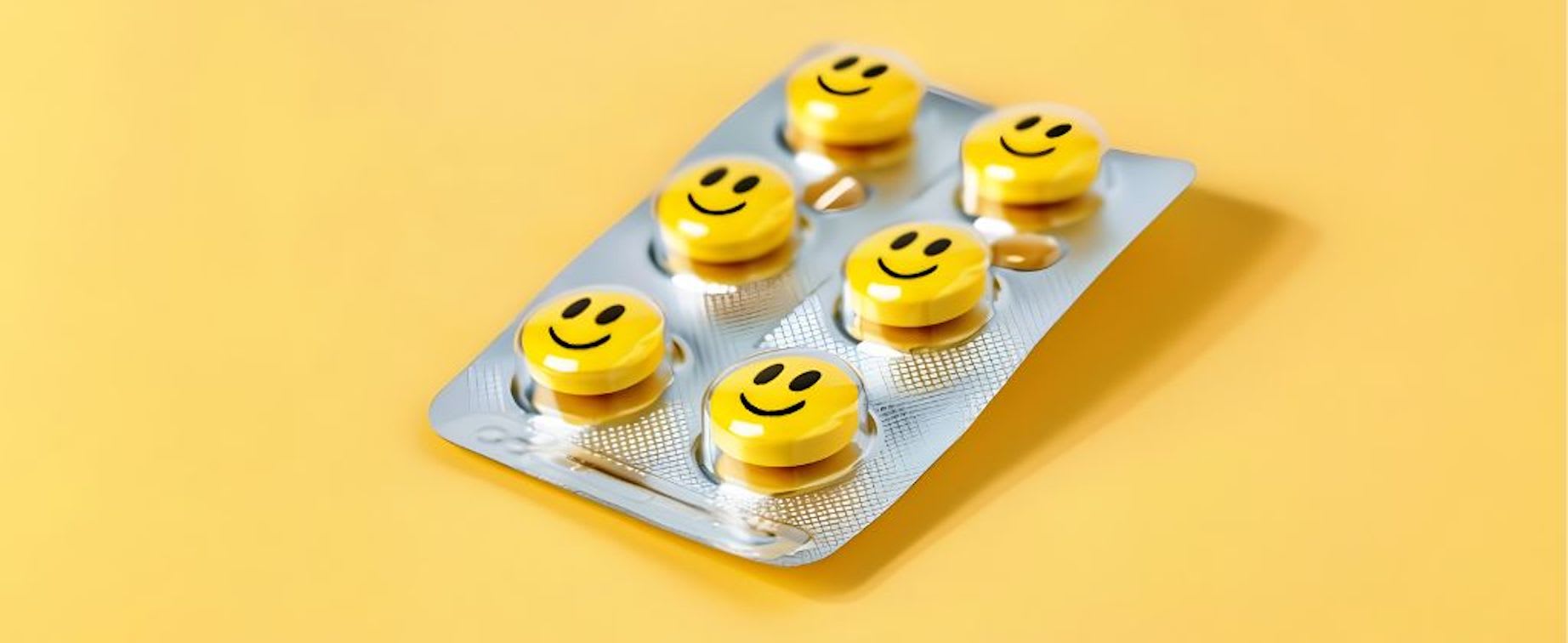Major Depressive Disorder (MDD) is more than just feeling sad or having a bad week. It’s a complex mental health condition that affects how people think, feel, and function in everyday life. If you or someone you know is struggling, it’s important to understand what MDD looks like, why it happens, and how it can be treated.
In this article, we’ll break down the causes of Major Depressive Disorder, discuss depression symptoms, and break down first-line treatment SSRIs like fluoxetine and sertraline.
What is Major Depressive Disorder (MDD)?
Major Depressive Disorder is a type of depression that causes persistent low mood and a loss of interest or pleasure in daily activities. It’s not just a phase or something you can “snap out of.”
According to the Diagnostic and Statistical Manual of Mental Disorders (DSM-5), a person must experience at least five depression symptoms to be diagnosed with Major Depressive Disorder. One of those symptoms must be either a depressed mood or a loss of interest or pleasure in most activities, and the symptoms must cause noticeable problems in social or work-related functioning. 1
These depression symptoms include:
- Depressed or irritable mood
- Loss of interest or pleasure in activities
- Changes in appetite or weight
- Sleep disturbances (too much or too little)
- Fatigue or low energy
- Feelings of worthlessness or guilt
- Difficulty concentrating
- Psychomotor changes (feeling slowed down or restless)
- Thoughts of death or suicide 1
Depression symptoms can severely affect relationships, job performance, and even physical health.
How Common is Major Depressive Disorder?
Major Depressive Disorder is one of the most widespread mental health conditions globally. According to the World Health Organization (WHO):
- About 280 million people around the world live with depression, which includes all levels, from mild to severe.
- Depression is more common in women than men.
- Globally, over 10% of women experience depression during pregnancy or after giving birth. 2
Interestingly, women are almost twice as likely as men to be diagnosed with MDD. This difference has been linked to hormonal fluctuations, social and economic stressors, and even the likelihood of seeking medical help. 1
Diagnosis rates are rising among younger people, which some experts link to increased alcohol and substance use. 1
Depression is also more commonly diagnosed in people who are divorced, widowed, or socially isolated. 1
What Causes Major Depressive Disorder?

There isn’t one single cause of Major Depressive Disorder. Instead, MDD is caused by a mix of biological, psychological, and social factors. Think of it as a puzzle where several pieces, such as brain chemistry, life stressors, genetics, and even hormones, come together to trigger a depressive episode.
- MDD is linked to changes in how neurotransmitters like serotonin, dopamine, and norepinephrine function. These chemicals play a major role in mood regulation. That’s why medications called SSRIs, such as fluoxetine and sertraline, are often used to treat MDD. They work by increasing serotonin levels in the brain, which can help balance mood over time. 3
- Stress and trauma are also major contributors. People who’ve experienced abuse, neglect, or a significant loss are more likely to develop MDD. Long-term stress can alter the function of the HPA axis (the system responsible for managing your body’s response to stress), and this dysfunction has been linked to depression. 3
- Genetics play a role, too. Studies show that MDD has a heritability rate of around 30 to 50%. If a close family member has experienced depression, your risk of developing it increases. 4
- It’s not just what's going on in your brain or your family history. Social factors like isolation, financial problems, or job loss can all tip the balance.
Often, these different causes overlap, making MDD a complex and highly individual condition. Understanding this helps explain why treatment needs to be just as comprehensive.
Recognizing Depression Symptoms
Spotting Major Depressive Disorder isn’t always straightforward because depression symptoms don’t look the same in everyone. For some, it shows up as overwhelming sadness. For others, it might look like anger, numbness, or physical complaints like headaches or fatigue that don’t have a clear medical cause. What’s consistent, though, is that these symptoms interfere with daily functioning.
The core symptoms of MDD include a persistently low or irritable mood and a noticeable loss of interest or pleasure in activities. 5 Alongside these, people may experience:
- Changes in appetite (eating more or less)
- Sleep problems (too much or too little)
- Extreme fatigue 5
It can feel like your energy has been completely drained. Concentration often becomes difficult, and decision-making feels like a monumental task. On top of that, many people with depression also experience anxiety. 5
Other common signs include feelings of worthlessness or guilt, even when there’s no clear reason for them. These feelings can snowball into hopelessness, self-blame, and suicidal thoughts. Some individuals may have “psychotic” symptoms like hallucinations or delusions during a depressive episode. 5
It’s important to note that not every case includes every symptom. Some people may look functional on the outside while battling Major Depressive Disorder internally. That’s why a thorough evaluation by a healthcare provider is essential for anyone experiencing signs of depression.
In primary care settings, depression is often missed because people report physical rather than emotional symptoms. They might complain of insomnia, back pain, or fatigue, unaware that these could be tied to underlying depression. This makes regular screening with tools like the PHQ-9 vital for early diagnosis and treatment. 1
Treatment Options for Major Depressive Disorder

SSRIs: The First-Line Medications
SSRIs are usually the first medications prescribed for Major Depressive Disorder. 5 These include:
- Fluoxetine (Prozac)
- Sertraline (Zoloft)
- Escitalopram (Lexapro) 5
SSRIs work by increasing serotonin levels in the brain, a chemical involved in mood regulation. While they’re not magic pills, they can be very effective over time. It often takes 2 to 6 weeks to see improvement. 5
Side effects are usually mild but can include nausea, sleep disturbances, and sexual dysfunction. If one SSRI doesn’t work, another might. Sometimes, doctors combine medications or add a mood stabilizer if symptoms persist. 5
Therapy and Talk Treatments
Psychological therapies are just as important as medication. Common options include:
- Cognitive Behavioral Therapy (CBT): Teaches people to challenge negative thought patterns.
- Interpersonal Therapy (IPT): Focuses on relationships and social functioning. 5
In moderate to severe depression, combining therapy with medication tends to work better than either alone.
Lifestyle Changes and Self-Care
Small changes in daily habits can support recovery:
- Regular exercise
- Consistent sleep schedule
- Limiting alcohol
- Staying socially connected
- Practicing mindfulness or stress-reduction techniques 1
Even a short daily walk can improve mood over time.
Conclusion
Major Depressive Disorder is a serious but treatable mental health condition that affects millions of people across the world. Recognizing depression symptoms early, such as persistent sadness, fatigue, sleep problems, or feelings of hopelessness, is the first step toward getting help. While it might feel overwhelming or isolating, you're not alone, and effective treatments are available.
One of the most common and successful approaches to managing MDD involves medications called SSRIs. These drugs, including fluoxetine, sertraline, and escitalopram, are often the first line of treatment because they target the brain chemicals most associated with mood regulation. SSRIs don’t work overnight, but with time and the right dosage, they can significantly reduce the intensity and duration of depression symptoms.
It’s important to note that SSRIs like fluoxetine and sertraline aren’t a one-size-fits-all solution. Some people may need to try more than one medication or use them alongside therapy to see real progress. However, these treatments have helped countless individuals regain control over their lives and manage their depression symptoms more effectively.
If you’re struggling, talk to your doctor about your options. Ask about SSRIs, including whether fluoxetine, escitalopram, or sertraline might be a good fit for you. Major Depressive Disorder may be tough, but with the right plan and support system, it’s something you can manage.
The content in this article is intended for informational purposes only. This website does not provide medical advice. In all circumstances, you should always seek the advice of your physician and/or other qualified health professionals(s) for drug, medical conditions, or treatment advice. The content provided on this website is not a substitute for professional medical advice, diagnosis, or treatment.






